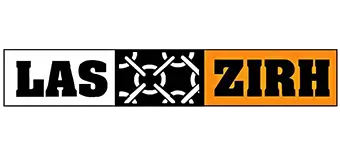Chain Safety Standards for OTR Tires: Safeguarding Operations in Mining and Beyond
In the rugged landscapes of mining and other off-the-road (OTR) applications, tire protection chains (TPC) are more than just accessories – they’re safety-critical equipment. Proper chain safety standards are non-negotiable, impacting not only tire longevity but also the well-being of operators and the efficiency of entire operations. This comprehensive guide explores the nuances of chain safety standards, delving into their significance, regulations, best practices, and how they contribute to a safer, more productive OTR environment.
Understanding Chain Safety Standards: The Foundation of OTR Tire Protection
Chain safety standards are a set of guidelines, regulations, and best practices designed to ensure the safe and effective use of tire protection chains on OTR vehicles. These standards cover various aspects, including:
- Chain Selection: Choosing the right type and size of chains for specific tire sizes and applications.
- Chain Installation: Proper installation techniques to ensure optimal fit and function.
- Chain Inspection: Regular inspections to identify wear, damage, or other issues that could compromise safety.
- Chain Maintenance: Guidelines for cleaning, lubrication, and repair to maximize chain lifespan.
- Operator Training: Educating operators on the safe use, inspection, and maintenance of tire protection chains.
Why Chain Safety Standards Matter: A Multifaceted Impact
Adhering to chain safety standards is not merely a matter of compliance; it’s a strategic decision with far-reaching benefits:
- Enhanced Safety: Properly installed and maintained chains significantly reduce the risk of chain failure, which can lead to accidents, injuries, or even fatalities.
- Improved Productivity: Well-maintained chains ensure optimal traction and minimize tire damage, leading to increased uptime and productivity.
- Extended Tire Life: By protecting tires from cuts, punctures, and excessive wear, chains extend their lifespan, reducing replacement costs.
- Cost Savings: Preventing chain-related accidents and reducing tire wear translates to significant cost savings in the long run.
- Regulatory Compliance: Adhering to safety standards helps companies avoid fines, penalties, or legal liabilities.
Navigating Chain Safety Standards: Key Regulations and Guidelines
Several organizations and regulatory bodies play a role in establishing and enforcing chain safety standards for OTR tires:
- OSHA (Occupational Safety and Health Administration): OSHA regulations address general workplace safety, including using personal protective equipment (PPE) during chain installation and maintenance.
- Mine Safety and Health Administration (MSHA): MSHA sets specific safety standards for mining operations, including guidelines for tire protection chains used on mining equipment.
- Tire and Rim Association (TRA): The TRA publishes guidelines for tire selection, load capacity, and inflation pressure, which are relevant to chain installation and usage.
- Chain Manufacturers: Reputable chain manufacturers often provide detailed instructions and guidelines for the safe and effective use of their products.

Best Practices for Chain Installation and Maintenance
To ensure optimal chain safety and performance, follow these best practices:
- Choose the Right Chains: Select chains compatible with your tire size, tread pattern, and application. Consider factors like terrain, weather conditions, and load capacity.
- Install Chains Correctly: Follow the manufacturer’s instructions meticulously during installation. Pay close attention to tensioning, alignment, and clearance.
- Inspect Regularly: Conduct frequent inspections to identify signs of wear, damage, or loose components. Address any issues promptly.
- Maintain Properly: Clean chains regularly to remove dirt, debris, and corrosive materials. Lubricate moving parts according to the manufacturer’s recommendations.
- Train Operators: Ensure all operators are trained on the safe use, inspection, and maintenance of tire protection chains.
Chain Safety Standards in Mining: A Critical Focus
In the mining industry, chain safety is of paramount importance due to the harsh conditions and heavy loads involved. Mining operations often utilize specialized chains designed to withstand extreme temperatures, abrasive materials, and heavy impacts. These chains are typically made from high-strength alloy steel and feature aggressive tread patterns for maximum traction.
Mining companies must adhere to strict chain safety standards, including regular inspections, maintenance, and operator training. Failure to do so can result in costly downtime, equipment damage, and, most importantly, injuries or fatalities.
Beyond Mining: Chain Safety Standards in Other OTR Applications
While mining is a major user of tire protection chains, they are also essential in other OTR applications, such as:
- Construction: Chains provide traction and protection for heavy equipment operating on construction sites, where conditions can be unpredictable and challenging.
- Forestry: Chains help forestry vehicles navigate rough terrain, steep slopes, and muddy conditions while minimizing tire damage.
- Agriculture: Chains are used on agricultural equipment to enhance field traction and protect tires from punctures caused by rocks or debris.
In each of these applications, adhering to chain safety standards is crucial for ensuring the safety of operators, maximizing equipment productivity, and minimizing operating costs.
The Future of Chain Safety: Embracing Innovation
As technology advances, we expect continued innovation in tire protection chains and their associated safety standards. New materials, designs, and installation techniques are constantly emerging, offering improved performance, durability, and safety.
One notable trend is the development of “smart” chains that incorporate sensors and connectivity features. These chains can monitor their condition, alerting operators to potential issues before they become critical. This proactive approach to maintenance can significantly enhance safety and reduce downtime.
Conclusion: Prioritizing Chain Safety Standards for a Secure and Productive Future
Chain safety standards are indispensable to the OTR industry, safeguarding operations, protecting workers, and maximizing equipment performance. By understanding and adhering to these standards, companies can create a safer, more efficient, and more profitable work environment.
In the ever-evolving world of OTR applications, chain safety will continue to play a pivotal role. By embracing innovation and prioritizing safety, we can ensure that tire protection chains remain a valuable asset for years to come.










